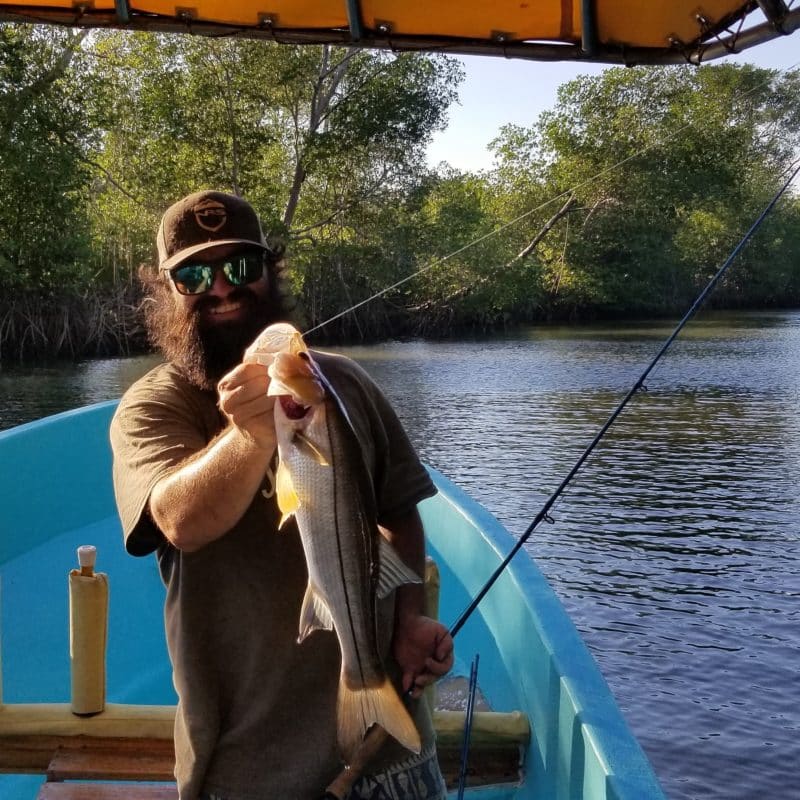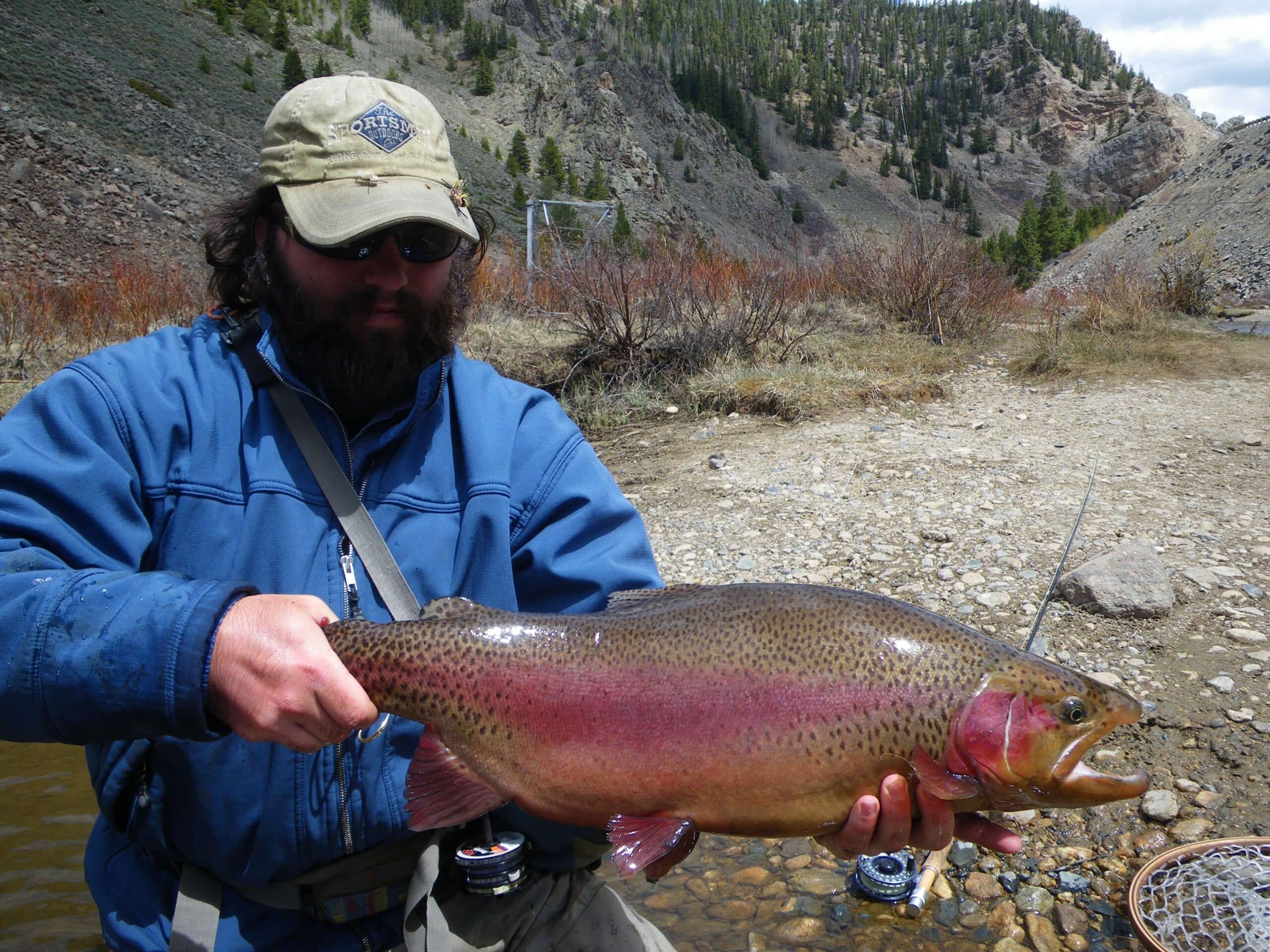Nicaragua tops my list for interested places to fly fish. It has a ton of opportunity and plenty of low traffic areas to explore. I stuck to the west coast and made an attempt to float a few freshwater rivers along the southwest border area.
Fishing Nicaragua’s Pacific Coast
The northern coast is very low key and doesn’t have many sportfishing outfits although a few good ones are running operations worth considering. Plenty of locals spend their days chasing snook and dorado however.
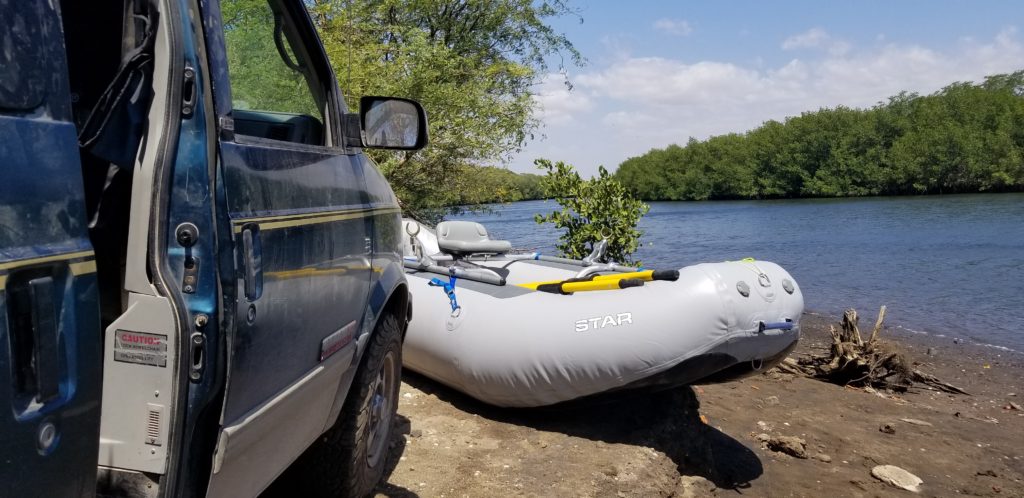
The Pacific Coast is better known among surfers and the many low cost surf camps are perfect for anglers as well. I stayed at one called Playa Tesoro and fished the mangrove lined river for snook. The location is out there and isn’t setup for fishing but they have a few boats around and a perfect setting for a DIY approach.
The next stop was a big surf break in Miramar. I stayed at the Miramar surf camp and spent an evening chasing snook with the owner Greg in his panga. He normally uses the boat to access an off-shore break but we jetted around mangrove channels in the river. I didn’t see another angler in the river at either location.
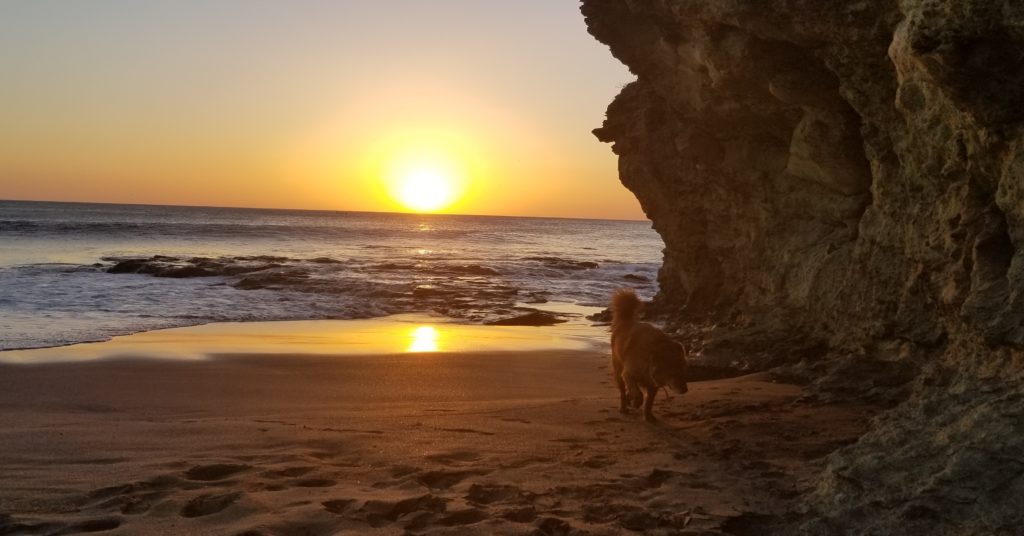
The beach right off the Miramar Camp has heavy surf but it’s very fishy. I didn’t see jacks riding the waves on my trip but apparently they do frequently and some very large snook appear here as well. It’s not easy fishing with big waves blasting in your face but I had a ton of fun stalking the beaches.
Missing Out on Tarpon
I had planned to venture towards the Caribbean side of the massive lake dividing the country in half but a deadline to meet family in Costa Rica was fast approaching. The San Juan River drains from the lake and connects to the Caribbean. Tarpon actually migrate through the freshwater and are present in the river system.
The mosquito coast is another bucket list tarpon fishery but the logistics are somewhat more challenging, requiring a dedicated lodge visit. A few great lodges sit on the San Juan river as well. Unfortunately, the country has political turmoil and the tourism operators are very slow. Hopefully people return to these areas in the future.
Exploring the Costa Rica Border
Additionally, a number of rivers feed the lake with cold water and they have a ton of potential for machaca. I drove the only road along the lake before the Costa Rica border. The road led to remote villages, many of the residents living on a subsistence diet. I had the idea to cross the rivers and find places to launch my raft but each waterway was limited to a single bridge crossing near the lake. The upper rivers are remote and inaccessible without dropping a boat in on the Costa Rica and running week-long floats to the lake.
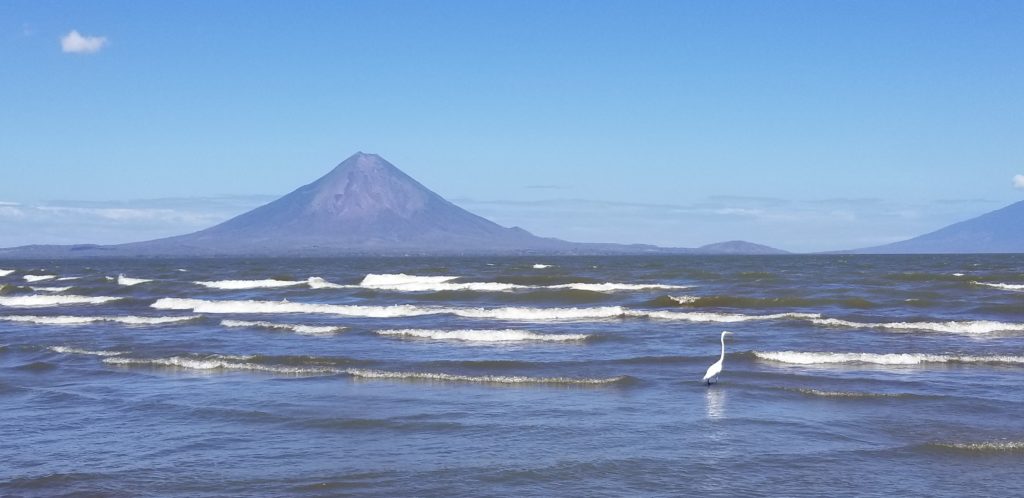
Each crossing also acted as a local hot spot for bathing and laundry. I watched a big machaca feeding near the feet of a blind woman doing laundry in one spot. The road was lined with military checkpoints and invasive soldiers searching my gear with a thousand questions about drugs and guns. I spent one night camped on the lake shore where locals dug for clams, collected water and offered me hand rolled cigarettes.
I hiked up a fishless creek and spider monkeys swung through the treetops while Shale cooled off in the cool water. I’ll be back for the tarpon and hopefully a border crossing expedition on one of the very remote river systems. The people in Nicaragua are friendly and wonderful. It’s one of my favorite countries in Central America for that reason.
